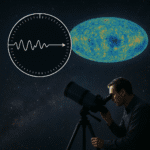The intricate dance between celestial bodies and our planet’s environment reveals a profound connection: insights from astronomy play a pivotal role in understanding and predicting Earth’s climate dynamics. By examining variations in Earth’s orbit, solar behavior, and the interstellar environment, scientists assemble a comprehensive picture of how extraterrestrial factors influence global temperature patterns, atmospheric composition, and long-term weather trends. This article delves into several key areas where cosmic observations help refine climate projections and guide policy decisions.
Orbital Mechanics and the Milankovitch Cycles
Understanding Orbital Parameters
Earth’s trajectory around the Sun is not static; instead, it undergoes subtle shifts in three primary orbital parameters:
- Eccentricity: the shape of the orbit varies from more circular to more elliptical on cycles of ~100,000 years.
- Axial Tilt: the tilt angle oscillates between about 22° and 24.5° over ~41,000-year periods.
- Precession: the wobble in Earth’s rotation axis completes a cycle approximately every 26,000 years.
These variations, collectively known as the Milankovitch cycles, drive major ice ages and interglacial periods by altering the distribution and intensity of solar radiation reaching different latitudes.
Modeling Long-Term Climate Shifts
Climate researchers integrate orbital data into numerical simulations to reconstruct past glacial epochs and forecast future temperature trends. By combining geological proxy records (e.g., ice cores, sediment layers) with precise astronomical calculations, scientists can:
- Identify the timing of ice sheet growth and retreat.
- Estimate patterns of monsoon circulation tied to insolation changes.
- Correlate orbital peaks with greenhouse gas concentrations trapped in ancient air bubbles.
Solar Variability and Climate Forcing
Measuring Solar Irradiance
Satellites and ground-based observatories provide continuous monitoring of solar irradiance—the energy Earth receives from the Sun. Fluctuations in solar output occur across several timescales:
- The ~11-year sunspot or Schwabe cycle.
- Longer-term grand minima and maxima, such as the Maunder Minimum in the 17th century.
- Irregular variations driven by magnetic activity and plasma flows in the solar interior.
Precise knowledge of solar output is essential for quantifying the Sun’s contribution to short-term climate forcing and for isolating anthropogenic warming trends.
Effects of Solar Particles and Magnetic Fields
Beyond visible light, charged particles ejected by the Sun (solar wind) and shifts in the solar magnetic field can influence Earth’s atmosphere. Key processes include:
- Modulation of cosmic ray flux, which may affect cloud nucleation rates.
- Enhancement of high-latitude atmospheric heating through auroral particle precipitation.
- Variations in the ionosphere that can alter atmospheric circulation patterns.
Understanding these mechanisms helps refine climate models and improves the accuracy of predictive modeling for regional weather extremes.
Cosmic Dust, Comets, and Atmospheric Chemistry
Dust Influx and Stratospheric Opacity
Interplanetary dust particles originating from comets, asteroids, and the Kuiper Belt continuously enter Earth’s atmosphere. When concentrated during meteor showers or rare comet passages, these particles:
- Scatter incoming solar radiation, leading to slight cooling effects.
- Provide surfaces for heterogeneous chemical reactions affecting ozone chemistry.
- Alter stratospheric aerosol concentrations, which can modulate radiative balance.
Tracking dust streams through telescopic surveys and in-situ satellite detectors allows climatologists to incorporate this subtle but significant radiative factor into long-term climate assessments.
Volatile Delivery by Comets and Asteroids
As comets and carbon-rich asteroids release water vapor, organic compounds, and other volatiles when heated, they contribute trace species to Earth’s upper atmosphere. While the overall mass contribution is small compared to volcanic or anthropogenic sources, certain compounds can catalyze ozone depletion or produce transient greenhouse effects. Monitoring near-Earth object populations and their activity informs risk assessments and atmospheric chemistry models.
Astronomical Observation Techniques in Climate Modeling
Satellite Remote Sensing of Earth and Space
Advanced Earth-observing satellites capture data on atmospheric composition, temperature profiles, cloud cover, and surface albedo. Simultaneously, space telescopes and solar observatories deliver high-resolution measurements of stellar and solar spectra. Integrating these datasets enhances our understanding of:
- Radiative transfer processes in both terrestrial and extraterrestrial contexts.
- Feedback loops involving clouds, aerosols, and surface reflectivity.
- Interactions between solar variations and atmospheric circulation modes like ENSO and the North Atlantic Oscillation.
Data Assimilation and Model Validation
Climate models rely on robust initial conditions and parameterizations. Astronomical data serve as benchmarks for validating radiative schemes and boundary conditions. Techniques include:
- Assimilating satellite-based measurements of solar spectral irradiance into global climate models.
- Comparing model-predicted isotopic signatures in ice cores with astrophysical nucleosynthesis records.
- Cross-referencing tree-ring solar proxies with spaceborne magnetic field observations.
By harnessing cross-disciplinary datasets, researchers reduce uncertainties in projections and improve the credibility of future climate scenarios.
Future Directions and Interdisciplinary Collaboration
High-Precision Stellar Chronology
The study of distant stars provides analogues for understanding the Sun’s potential long-term behavior. Observatories like the James Webb Space Telescope and ground-based arrays will:
- Identify solar twins at different evolutionary stages.
- Map stellar cycles of analog stars to anticipate possible solar minima or maxima.
- Refine age estimates for the Sun, reducing uncertainties in paleo-climatic reconstructions tied to solar evolution.
Integrating Space Weather Predictions
As space weather forecasting becomes more sophisticated, data on solar energetic particles and geomagnetic storms can be incorporated into climate risk assessments. This synergy between heliophysics and meteorology will allow for:
- Early warnings of atmospheric disturbances linked to extreme solar events.
- Adaptive strategies for radiation management and aviation safety during high-latitude flights.
- Advanced mitigation plans for potential disruptions in satellite-based climate monitoring systems.
Collaborative Research Networks
Building global networks of astronomers, climatologists, and data scientists fosters comprehensive studies that span from interplanetary phenomena to terrestrial climate feedbacks. Initiatives such as coordinated observation campaigns, open-access data repositories, and joint modeling frameworks will be essential in tackling the complex challenge of predicting Earth’s future climate under both natural and anthropogenic influences.










